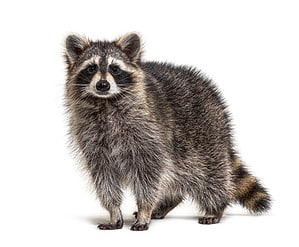How can you instantly get rid of raccoons from your yard?
Raccoons are often seen running between neighborhoods across the U.S. They are more common in urbanized areas in suburbs and cities than in rural or forest areas and, if conditions are favorable, may have chosen to share your property with you.
Read further for tips on what to do when raccoons invade your yard.
Raccoons Overview
The raccoon is a common and well-known native mammal that is nocturnal and rarely seen during the day. It is a sturdy animal, with a body length of about 2-3 feet and a body weight of 11-57 pounds. It has short legs, a pointy snout, round ears like a panda, and shiny beady eyes.
This mammal is clothed in a dense, shaggy fur coat in colors of iron grey to black, with tinges of brown. It is easily recognizable with the dark mask-like strip across the eyes and a long, thick-ringed tail with five to ten black bands. The mask indicates it is a bandit and the stripy tail of a jailbird.
Like tiny hands, the raccoon’s front paws have five long, slender fingers that face forward and are very nimble and ‘handy.’
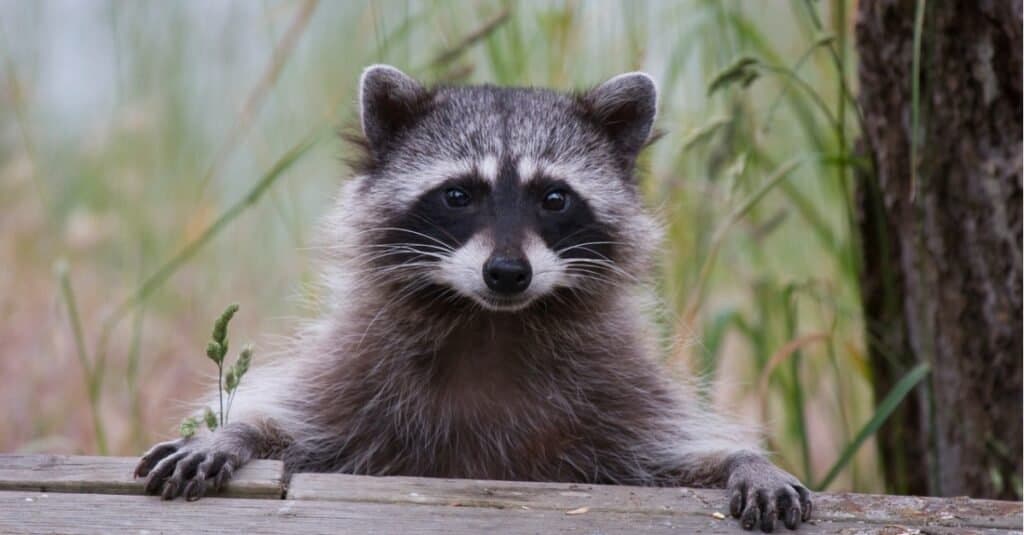
Raccoons are one of the ultimate scavengers of the animal world.
©iStock.com/cullenphotos
Assess the Situation: Understanding the Scale of the Raccoon Infestation
Raccoons, also called “trash pandas,” are pesky, invasive creatures with whom you do not want to share your yard or living premises.
Raccoons, being omnivorous, eat both plants and animals. Their diet includes fish, frogs, mice, turtles, insects, crayfish, mussels, birds’ eggs, fruits, and berries. They are not fussy eaters and will consume almost anything.
Raccoons have adapted well to living alongside humans. So, in the urban situation, they have no problem raiding your garbage cans, plundering the fruit and vegetables from your garden, poaching your pet’s food from their feeding bowls, and generally causing mayhem in your living space. Raccoons are also one of the most common species to carry rabies and can shed viruses, bacteria, and parasites when coming into contact with humans and animals.
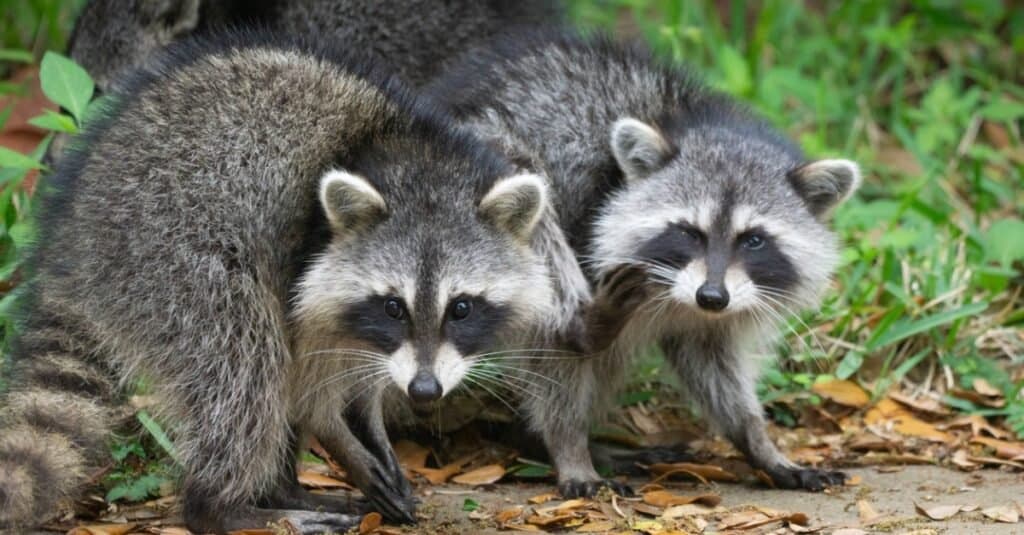
If attacked by a raccoon, one should disinfect and cover the wound and seek immediate medical attention.
©Mark_Sawyer/Shutterstock.com
Signs You Have a Raccoon Invasion
Here are some typical telltale signs that you may have an invasion of raccoon bandits:
- Paw prints or tracks in the soil. The five-finger-like front paw print, typically 1-2.5 inches, and up to 4-inch long back paws, are a dead giveaway of the presence of raccoons. If there is more than just one set of prints, it is obvious there is more than just one raccoon on your property.
- Scattered garbage from an upended bin in your yard where they scavenged for food.
- Damage to the home exterior in the form of claw marks on your porch, trees, windows, doors, facia, vents, roof, and scratch marks on woodwork.
- Raccoon feces (scat) and urine left at the base of trees or woodpiles are also strong signs of raccoon activity.
- Strange noises like high-pitched sounds, hisses, snarls, or jabbering.
- Sounds from your attic of raccoons shuffling across the attic floor, the roof, or the inside of walls. Raccoons urinate and defecate in your attic, giving off a foul smell.
- Damaged tree branches could be evidence of them climbing up and down.
- Change in the behavior of pets. Outdoor dogs will alert you to the presence of a raccoon and may even succeed in chasing it away.
- Nesting materials raccoons use for building nests include leaves, twigs, long grass, fabric, housing materials, and paper that have accumulated in one spot.
How to Instantly Get Rid of Raccoons From Your Yard
Once you have established that there are raccoons that are trespassing on your property, there are several strategies you can use to get rid of them.
Here are a few suggestions:
- Natural repellants are a great way to eliminate raccoons from your yard humanely. Mix cayenne pepper, vinegar, ammonia, and peppermint oil with water and put it in a spray bottle. Use on plants, bushes, and shrubs and even on walkways and wall surfaces. Raccoons hate the spicy and peppery smell and taste these substances give off.
- The smell of predator urine is a very effective deterrent. This can be bought commercially in the form of granules or spray.
- Traps can be used to capture raccoons. However, each state has raccoon trapping, relocating, and killing laws. Be sure to check your state’s rules.
- Trash cans should be securely shut with tight-fitting lids, weighed with heavy objects, or strapped down with strong cords. Store them in a shed or closed-off area until the garbage can be disposed of.
- Installation of a motion-activated sprinkler device in a strategic area will startle and frighten the intruder when it squirts off a jet of water. Since raccoons are nocturnal and do their foraging at night, installing a motion sensor light will scare off the raccoon.
- Exclusion means keeping raccoons out! Seal and secure entry points, install fences, and use one-way doors. Fence open spaces underneath decks and porches so raccoons cannot get in and nest. Prune the branches of trees several feet away from your roof so that raccoons may not gain easy access to your top and into your chimney. Protect chimney openings with wire mesh.
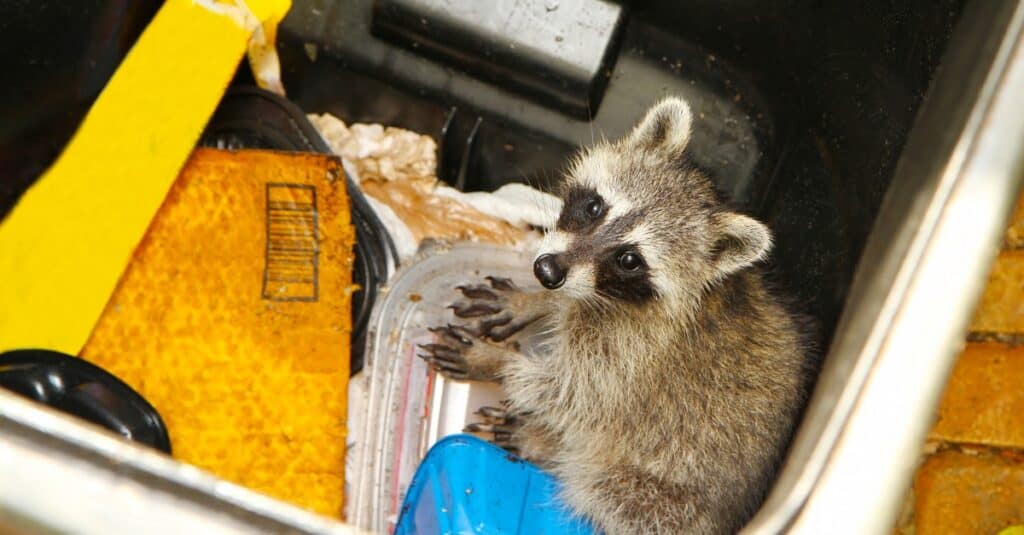
Raccoons are always fidgeting, feeling, and looking around for food.
©Jillian Cain Photography/Shutterstock.com
Remove Attractants
The main reasons raccoons would be attracted to specific areas are firstly for food and then also for shelter and safety. Since prevention is better than cure, be proactive and remove or protect the following:
- Potential food sources: unsealed garbage cans, compost piles, leftover pet food, bird feeders and baths, goldfish ponds for fish and water, chicken coops for chickens and eggs, and gardens with fruit and vegetables.
- Potential areas for shelter and nesting: openings under the porch and deck, trees with access to the roof and chimney, and piles of wood and debris.
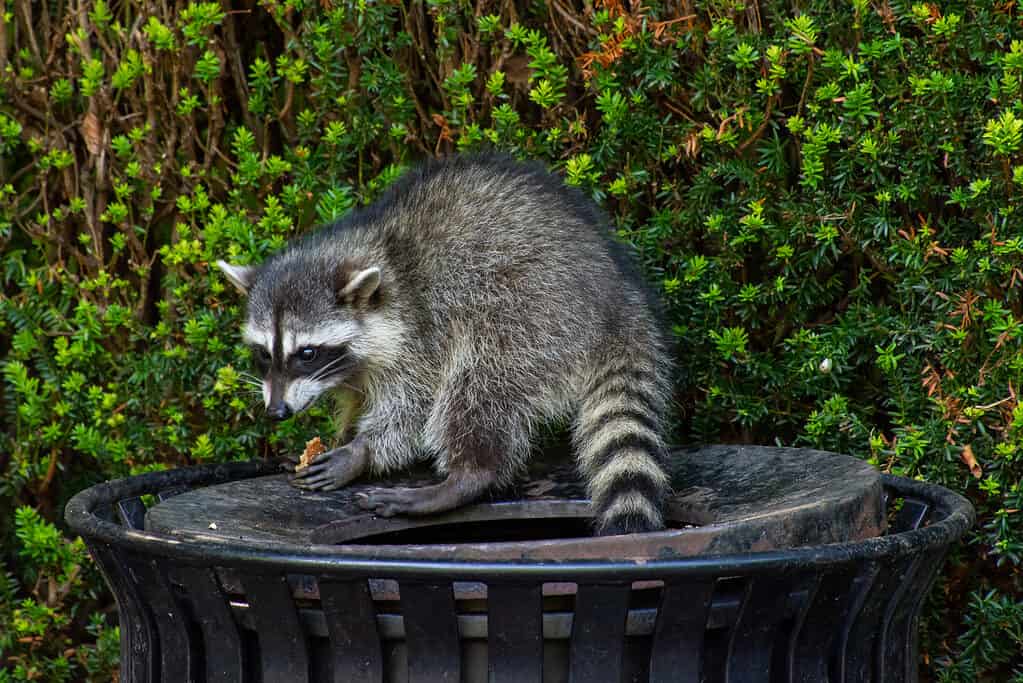
Raccoons are known for the fur around their eyes, also known as “bandit masks.”
©kingma photos/Shutterstock.com
Clearing Food and Water Sources to Encourage Raccoons to Leave
Easy access to food and water sources was what likely attracted raccoons to your property in the first place. It, therefore, stands to reason that removing those easily accessible sources is what you need to do to make your living space unattractive to raccoons. They will then leave for new and more attractive foraging grounds.
- Securely shut and store garbage bins.
- Remove uneaten pet food and birdseed at night.
- Protect both your garden and chicken coop and compost with fencing and netting.
- Remove water fountains.
- Cover fishponds with netting to block access to water.
- Remove sources of standing water, clear drains and gutters, secure faucets, and stop water leakages.
Not having access to food and water will give raccoons a good reason to move on to greener pastures!
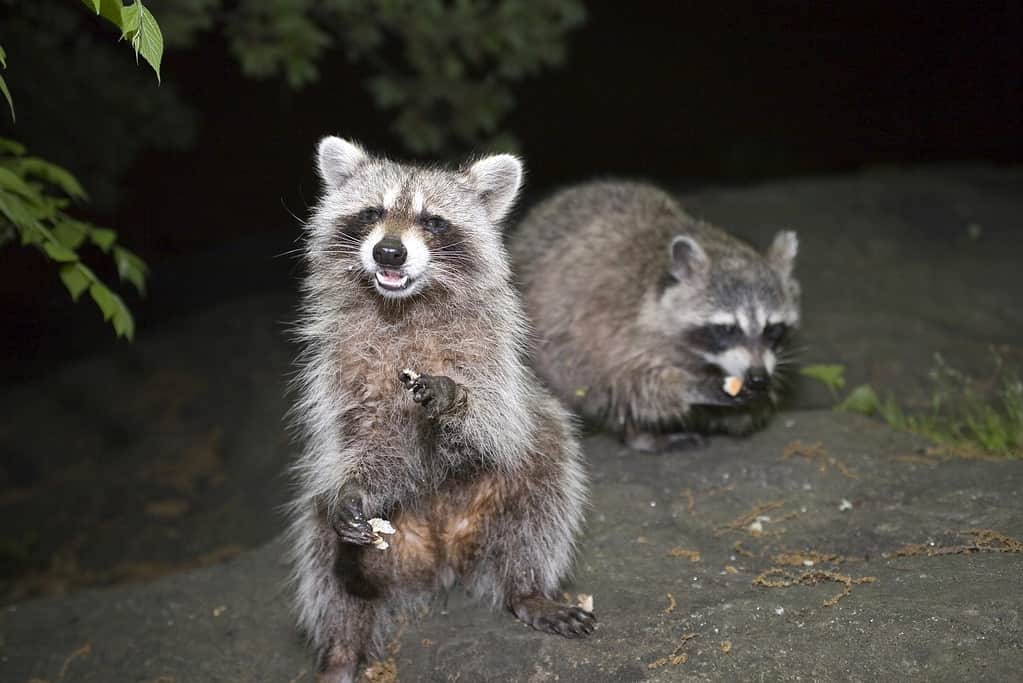
Raccoons live in groups of 4 or 5 individuals, known as a nursery.
©iStock.com/eddtoro
Repellents and Deterrents: Using Effective Methods to Discourage Raccoon Activity
Using natural do-it-yourself repellent and deterrent remedies with items from your kitchen and using commercial products like traps, motion sensors, or predator urine products may help somewhat with an infestation of raccoons.
If these methods prove inadequate to sort out the problem and remove the raccoons from your property, it is time to bring in the big guns!
Seek Professional Assistance: Consulting Wildlife Experts for Safe and Efficient Raccoon Removal
It may become necessary to call in a team of experienced wildlife experts to sort out your problem and effectively remove all the raccoons from your property humanely while ensuring the safety of you, your family, your pets, and your neighbors.
These professionals have been trained to handle the problem of raccoon removal reliably and efficiently with special products and equipment. They can help you identify and seal off any parts of your home that raccoons can access. They will also advise you on keeping the problem from recurring.
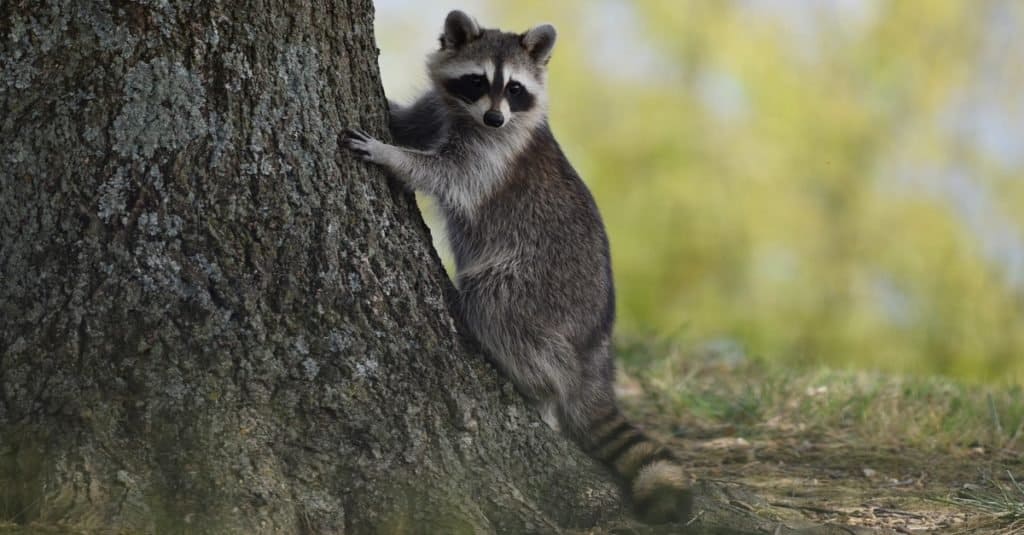
Although cute and playful, raccoons are extremely high-maintenance and unpredictable, so most experts advise against keeping them as pets.
©Maryna Rayimova/Shutterstock.com
What to Do When the Raccoons Are Gone From Your Yard
Raccoons are an extremely tenacious bunch and are likely only to leave if they put up a fight. It is, therefore, imperative that you put strict measures in place to keep them away.
- Ward off their return to your property by repairing and replacing damaged and broken wood, shingles, and soffit panels and ensuring all entry points are fixed, sealed, and reinsulated.
- During their stay in your attic or wall panels, raccoons will contaminate the space with droppings and urine and have likely left their nesting materials alive with fleas, ticks, or mites. It is necessary to sanitize and deodorize the area to kill off pest insects and to remove unpleasant odors.
- Be sure to make your home a “Keep Out” zone for opportunistic raccoons by ensuring that they have no access to any food sources on your property by removing attractants.
The photo featured at the top of this post is © iStock.com/amadeusamse
Thank you for reading! Have some feedback for us? Contact the AZ Animals editorial team.




